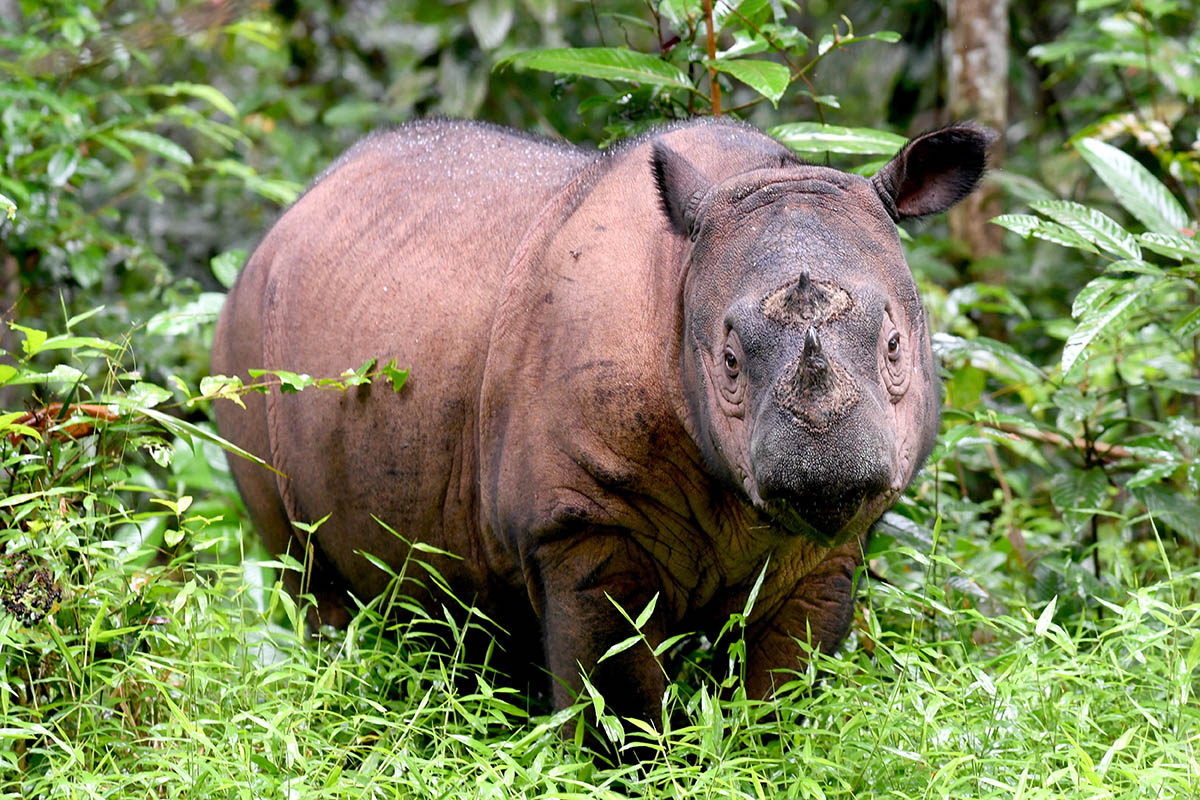Iman, the last female Sumatran rhino (Dicerorhinus sumatrensis) in the Malaysian state of Sabah, has fallen seriously ill over the past few days due to bleeding in her uterus, authorities there reported.
The rhino, which experts believe to be fertile, had a tumor in her uterus, according to the Sabah Wildlife Department. It added that the tumor ruptured and she started bleeding about four days ago.
“Usually, this can be treated with medication and supplements,” said Augustine Tuuga, a director at the state institution that has monitored Iman since she was captured in 2014 for a captive-breeding program.
Tuuga said veterinarians had been having trouble carrying out medical treatments for the rhino, which lives in a paddock at the Wildlife Reserve in Tabin, near the coastal Lahad Datu district.
“This time, Iman is refusing to leave her mud wallow and she has hardly eaten, so the usual treatment has not been possible. She charges at anyone who comes near,” Tuuga said.
The situation has been exacerbated by the heavy rainfall in Tabin this year, which has turned the paddock into a muddy quagmire.
Tuuga said the wildlife department was devastated to learn about Iman’s condition, particularly following the demise of Puntung, Malaysia’s only other female Sumatran rhino, earlier this year.
He said the rhino’s keepers and vets from the Borneo Rhino Alliance (BORA) were keeping constant watch on Iman. “We are hoping for the best and will keep the public informed,” Tuuga said.
Experts believe that no more than 100 Sumatran rhinos, and perhaps as few as 30, are left on the planet, scattered in tiny populations across Sumatra, Borneo and maybe peninsular Malaysia.
The critically endangered species was decimated by poaching and habitat loss in the past, but today observers say the small and fragmented nature of their populations is their biggest threat to their survival. This has led to the establishment of semi-wild sanctuaries in both Sabah and Sumatra in a last-ditch effort to bring together male and female rhinos, which are naturally solitary animals, for breeding purposes.
Iman was named after a river near where she was discovered in Sabah’s Danum Valley. She and a male rhino called Kertam, or Tam, are kept at the Tabin Wildlife Reserve under the care of BORA.
Puntung was euthanized on June 4 after suffering for three months from skin cancer.
Hopes of starting an artificial rhino breeding program were dashed when scientists were unable to recover any eggs from Puntung’s ovaries. Meanwhile, repeated requests from Malaysia for frozen sperm from the captive-breeding program in Sumatra to inseminate eggs taken from Iman were ignored by the Indonesian government.
This article first appeared on Mongabay.
Mongabay is an environmental science and conservation news and information site.
Recommended stories:
